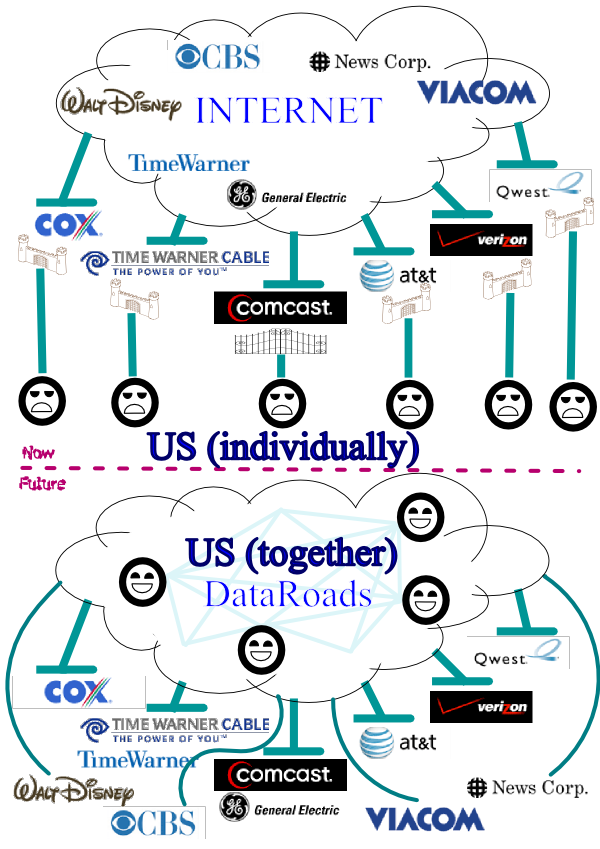Why I started DataRoads.Org
As with most truly new endeavors, this one took a path that no one could predict or intend. I really thought there would already be something like this out there, somewhere. I was surprised the DataRoads.Org domain name was even available. Even after setting up this web site, I thought all that we would have to do is promote existing network standards for deployment by land and home owners, making the Data Roads Foundation more like an Auto Club and less like a civil engineering firm.
In fact, I thought I already knew of a couple Data Roads routing software candidates, via my research for the NELA-ISC.Net project. The main projects I had in mind were CUWiN and PERM, both wireless mesh projects of the University of Illinois at Urbana-Champaign. Unfortunately, most of the updates and action on these projects seem to have ended in 2008, due to students graduating, and Ph.D. candidates finishing their theses. They are two great open source projects to work from, but thorough research made it obvious that I would be fairly alone in updating them to the latest hardware. It also seemed like these projects were limited to small communities in scope, because of the use of IPv4 addressing. ICANN is running out of IPv4 numbers this year, because they are insufficient for seamless global routing compared to IPv6.
Continue reading “Why I started DataRoads.Org, and ThePoint.com Challenge.”
